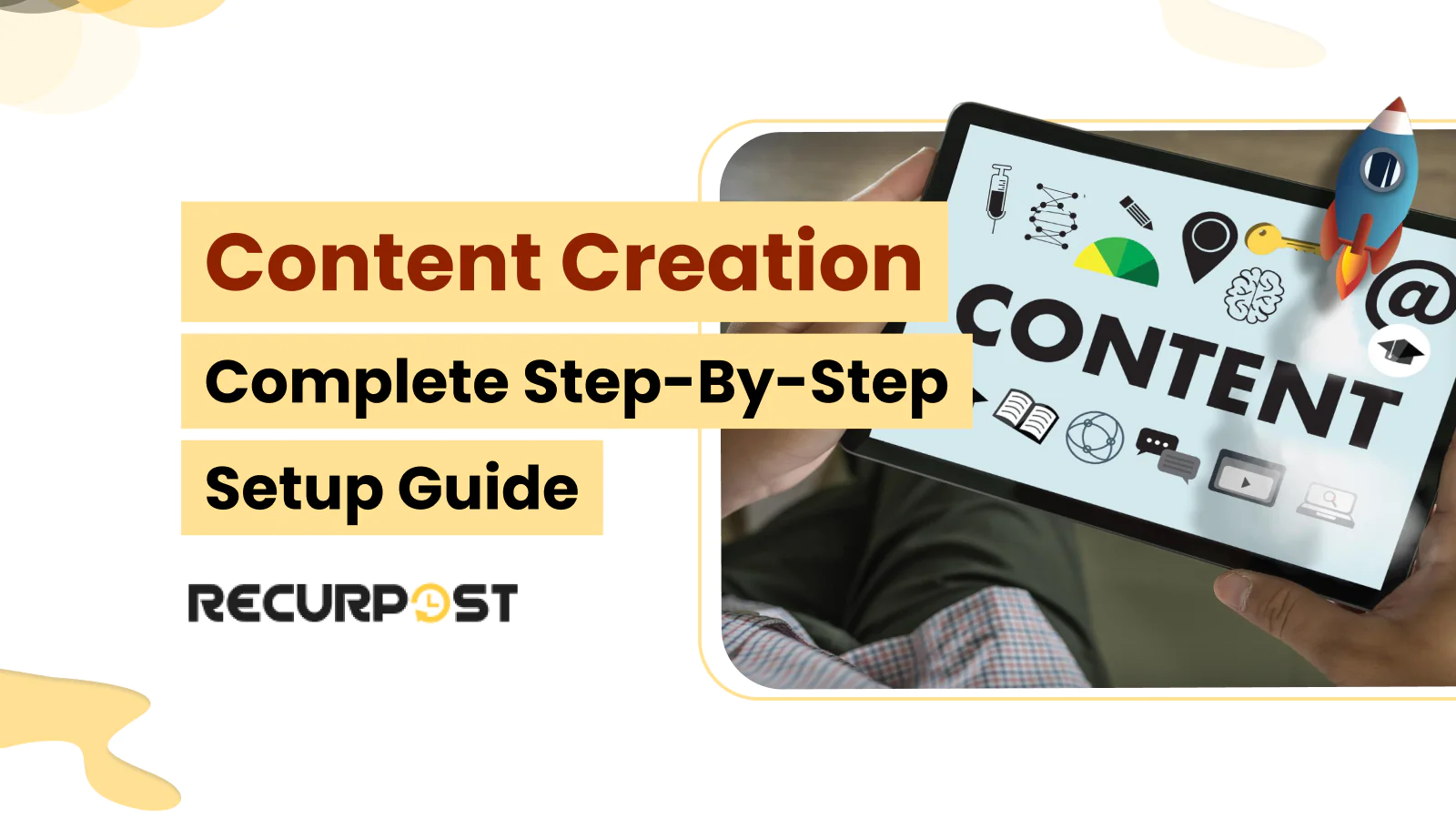Ever scroll through social media and wonder, “How do these people keep coming up with stuff that actually gets noticed?”
You’re not alone. Content is everywhere in 2025. Feeds are full of brands, creators, and regular people all trying to get your attention; most just blend into the noise.
If you’re starting out, that can feel intimidating. Maybe you’ve got ideas, but no clue where to start. Maybe you’ve posted before, but nothing really took off. Or maybe you just want your business, hobby, or voice to stand out without feeling fake.
Here’s the truth: You don’t need a big team, fancy camera, or viral luck. You just need to know what works today in Content Creation.
This guide is for you if you want:
- Clear steps from first idea to finished post, even if you’re starting from scratch
- The real reasons content matters (no buzzwords)
- Answers to the questions beginners are too embarrassed to ask
- The tools, tricks, and shortcuts people use but rarely talk about
By the end, you’ll have a simple plan you can follow no matter your experience, budget, or niche. If you’ve ever wanted to share something online and have people actually care, you’re in the right place.
Why Content Creation Matters in 2025?
Content Creation dominates digital marketing in 2025. Short-form video content and AI-powered tools reshape how brands reach their target audience. TikTok, Instagram Reels, and YouTube Shorts make quick, engaging content essential for visibility and organic traffic.
AI tools are revolutionizing the content creation process, making it faster and enabling personalized messaging at scale. Personalization now matters as consumers demand more relatable, relevant content across multiple platforms.
A 2023 Accenture survey revealed that 91% of consumers are more likely to buy from brands that deliver valuable content with personalized experiences.
Brands must adapt by creating content that feels authentic. Email campaigns, social media posts, and interactive formats are now expected. Tailored messaging not only resonates with audiences but also helps brands build trust and drive stronger engagement.
Who is a Content Creator?
A content creator crafts, publishes, and manages digital content across various platforms. Successful content creators build trust by producing engaging content that informs, entertains, or promotes. Types of content creators include:
- Writers: Produce written content pieces like blogs, eBooks, or blog posts for websites.
- Videographers: Capture video content for platforms like YouTube, TikTok, or Instagram social media accounts.
- Influencers: Use their brand voice to share social media posts that resonate with a specific audience and potential customers.
- Marketers: Create quality content with clear goals like generating leads, supporting a sales team, or boosting website traffic.
- Designers: Produce visuals such as infographics, social media content, and website content tailored to a brand’s style.
Types of Content Creation
Here are the most common types of Content Creation you’ll encounter:
Written Content
Written content includes blogs, articles, eBooks, whitepapers, and email newsletters. These formats support SEO and drive organic traffic when shared as social media posts or website content.
For Example, Mindbodygreen is a hub for holistic well-being, offering expert health and wellness written content pieces in the form of a blog post – one of many effective content creation examples in the wellness industry.
For more content inspiration, check out 75 Blog Post Ideas To Attract Your Audience in 2025 for practical and creative topics to jumpstart your writing strategy.

Visual Content
Visual content includes infographics, memes, Instagram posts, Pinterest graphics, and other social media content that deliver engaging content in clear, visually appealing ways.
For example, a gaming brand might use an infographic to show off new designs, while a fashion brand might use high-quality content to feature a model and capture its target audience.
For Example, The Ordinary creates impactful social media posts that resonate with its audience by using minimalistic visuals, ingredient-focused messaging, and relatable skincare tips.
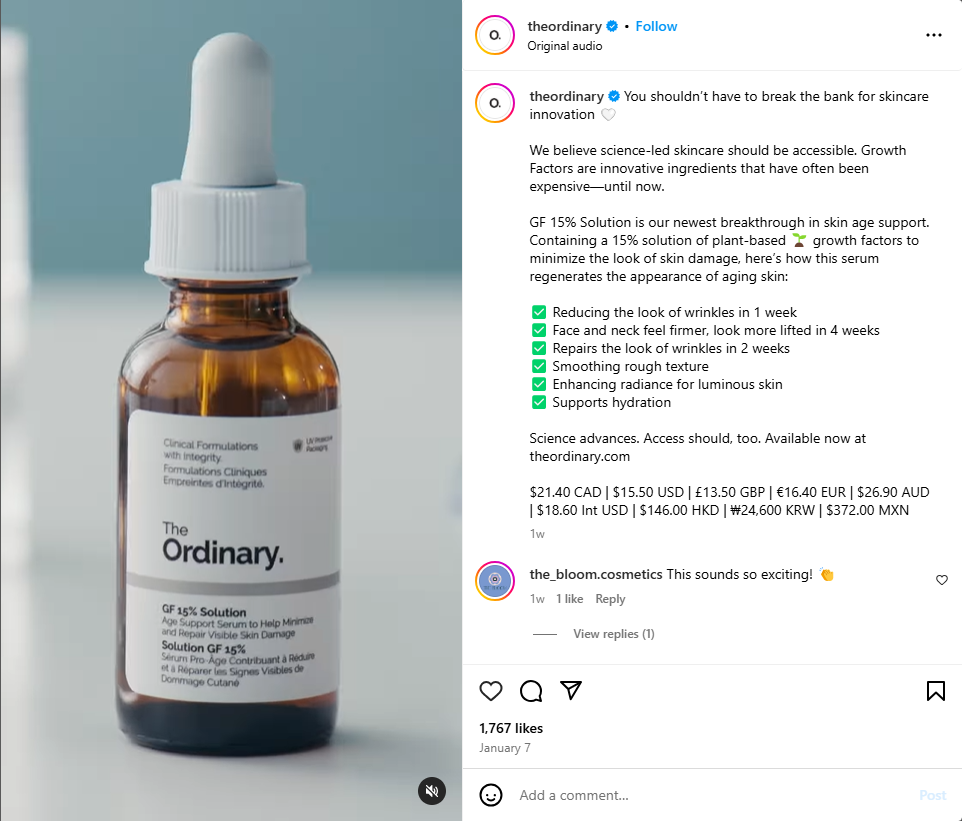
Audio Content
Audio content includes podcasts, audiobooks, and voice-over content that reaches a specific audience during commutes, workouts, or multitasking.
For Example, SmartLess is a popular podcast where Jason Bateman, Sean Hayes, and Will Arnett mix humor and curiosity while interviewing industry leaders.
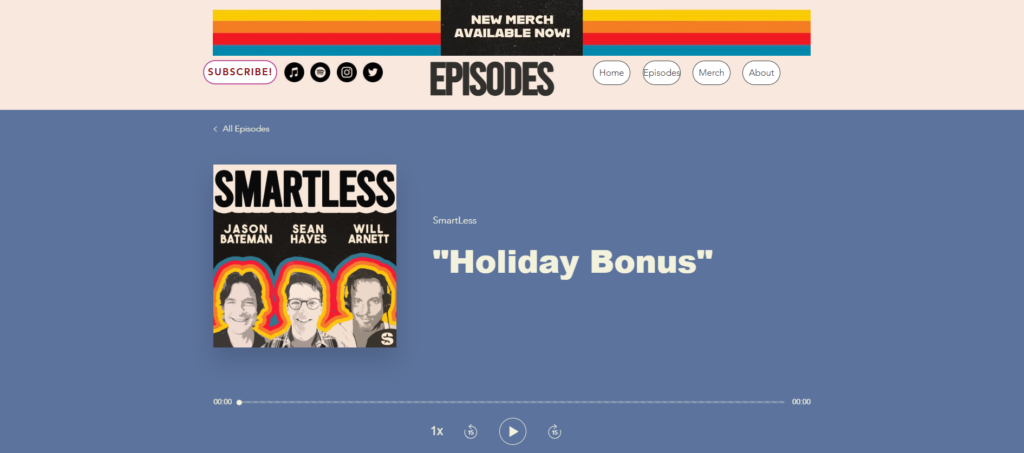
Video Content
Video content spans YouTube videos, TikToks, webinars, and live streams that attract viewers on social media platforms and keep them engaged.
For Example, Marques Brownlee is a successful content creator delivering high-quality content with in-depth reviews on the latest gadgets.
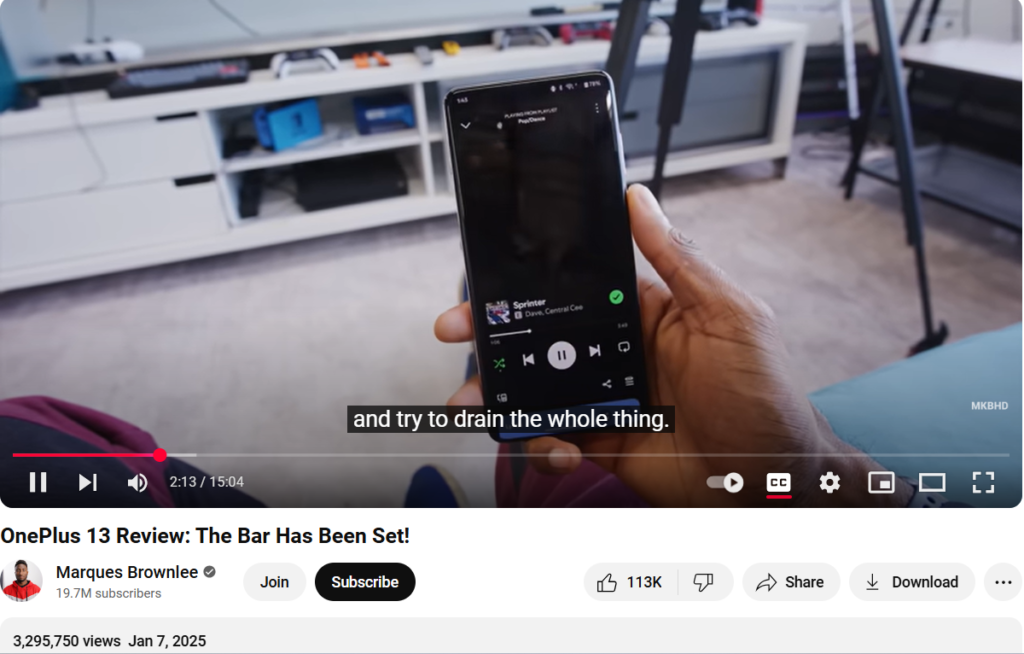
Interactive Content
Interactive content like polls, quizzes, and AR/VR experiences invites participation, creating engaging content that improves retention and strengthens audience relationships.
For Example, Slido is a tool that supports content promotion with live polls, quizzes, and Q&A sessions to make interactions smooth and memorable.
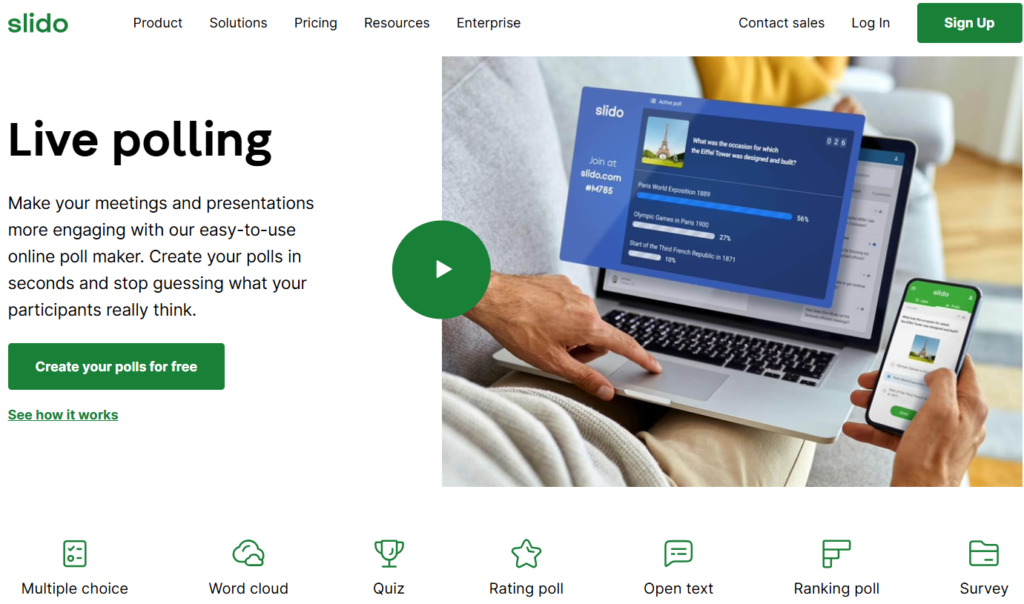
The Content Creation Process
Use a structured framework to guide your content creation process, from brainstorming to publishing. Tools like Notion help organize tasks, track a content calendar, and manage ideas in one place.
Step-by-Step Guide to Creating Content
1. Generate Ideas
Content Creation begins with ideation. Strong content ideas fuel high-quality content that resonates with a target audience. Brainstorming draws on audience research, trends, and competitive insights.
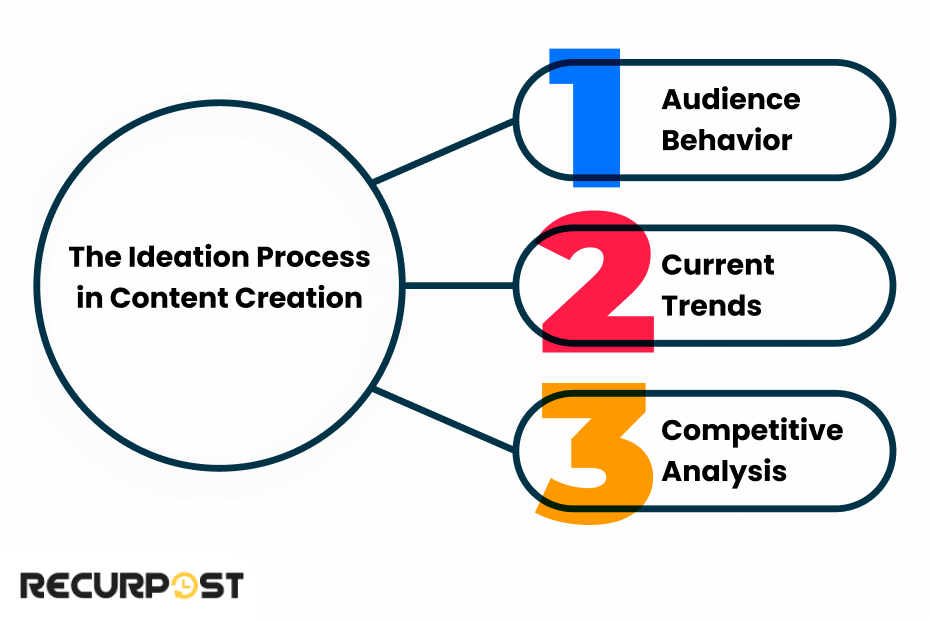
Review what others in your niche are doing to uncover content gaps. See how competitors engage and aim to create valuable content that provides a fresh perspective. For inspiration tailored to social media platforms, explore lists of social media post ideas for business.
2. Research
Research supports your content ideas. Content creation requires understanding what audiences search for and consume rather than guessing their preferences.
Find trending keywords and uncover content gaps in your niche. Check out what your competitors are doing, and see where they might be missing the mark. This will give you the insights you need to create content that fills those gaps and captures the attention of potential customers.
3. Content Planning
A structured content plan maintains consistency and organization. After determining content direction, organize ideas into a comprehensive plan. For more complex projects, many teams use a Gantt chart to visualize their timelines or a flowchart to map out a clear process. A clear workflow and a content calendar are also key.
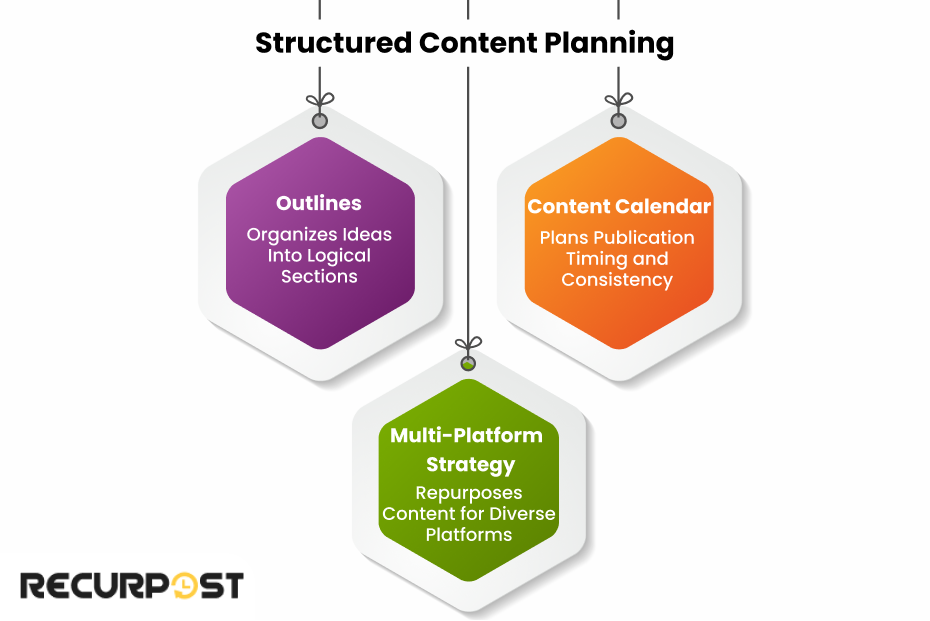
This should include:
- Outlines: Organize your ideas into sections or headings that logically flow from one point to the next.
- Content Calendar: Plan when and where each piece of content will be published. This helps keep content consistent and ensures you’re reaching your audience at the right times.
- Multi-Platform Strategy: Plan how your content will be repurposed across various platforms. For instance, you might turn a blog post into a YouTube video or an Instagram story to reach different audience segments.
4. Creation: Craft Your Content
The creation phase involves writing blog posts, filming videos, or designing graphics tailored to specific platforms and audiences
To excel at content creation for social media, focus on understanding your audience, leveraging trends, and encouraging interaction through polls, questions, and shareable posts.
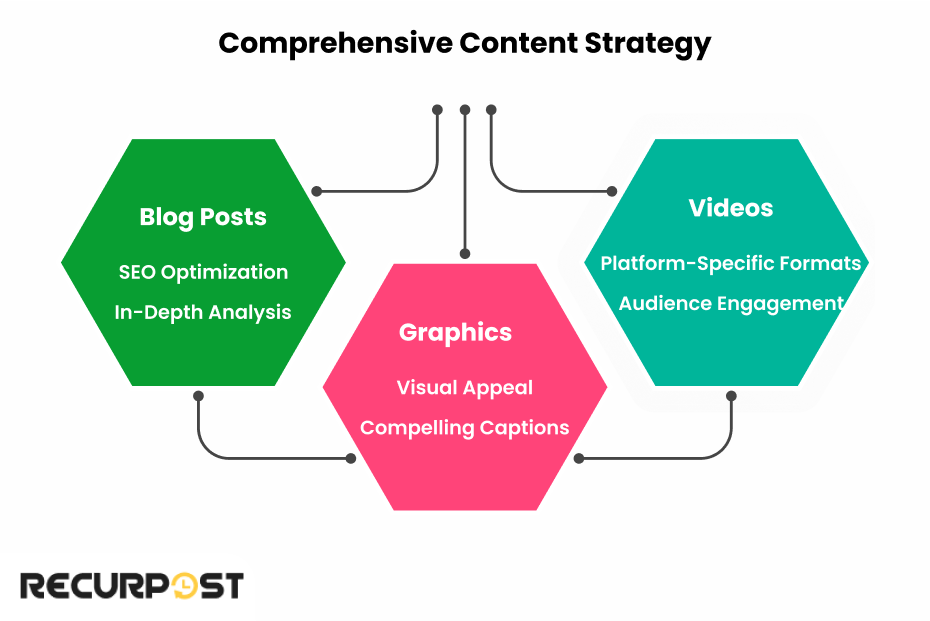
For example, a blog post needs to be in-depth, informative, and SEO-optimized, while an Instagram post requires a quick, eye-catching visual paired with a compelling caption.
5. Editing & Optimization:
Polish and optimize content for readability and SEO before publishing.
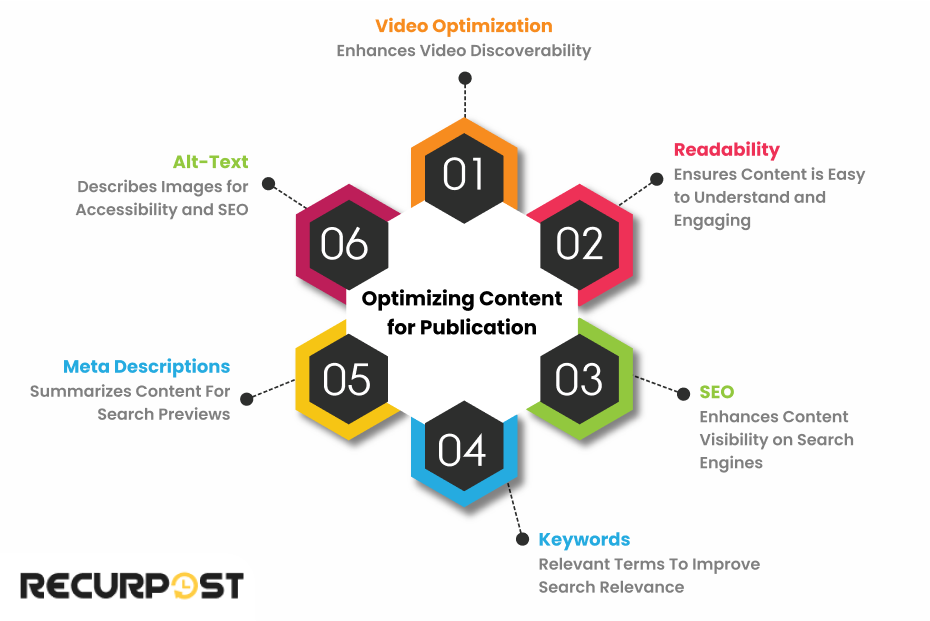
Additionally, optimize your content for search engines. Incorporate relevant keywords into web pages, write meta descriptions, and add alt-text to images. For video content, make sure you’re including optimized titles, tags, and descriptions.
For professional content creation environments, establish a systematic review workflow that includes peer review, quality assurance checks, and approval processes. This content review system helps maintain brand consistency, factual accuracy, and editorial standards across all published material.
Many content teams implement multi-stage review processes where content passes through subject matter experts, editors, and stakeholders before final publication. Content review workflows can include fact-checking phases, legal compliance reviews for regulated industries, and brand voice audits to maintain consistent messaging.
Document your review criteria and create checklists that cover grammar, accuracy, brand alignment, and platform-specific requirements to streamline the review process and reduce revision cycles.
6. Publishing & Promotion
Publish content at optimal times for each platform to maximize reach.
The best times to post on social media in 2025 vary by platform:
Facebook: 7 AM on Saturdays
Instagram: 5–7 AM on Wednesdays
X (Twitter): 10 AM–1 PM on Mondays and Tuesdays
LinkedIn: 7–8 AM on workdays
TikTok: 3 PM on Thursdays
Threads: 8 AM on Tuesdays
Pinterest: 12 PM on Fridays
Wednesdays at 8 AM remain the overall sweet spot for most networks (RecurPost)
Promote content across multiple channels, including social media, newsletters, and paid ads. Cross-promotion maximizes content visibility.
Advanced Tools for Content Creation
- Writing Tools: Jasper.ai and Writesonic support content creators by generating blog posts, social media posts, and product descriptions. They speed up the content creation process while maintaining quality content.
- Video Editing: Editing video content can be demanding, but tools like CapCut and Final Cut Pro simplify workflows. These help you produce high-quality content even with limited editing experience.
- Design Platforms: Canva Pro, Adobe Express, and Figma enable content marketers to design social media content, infographics, and other visual content. They’re useful for building a consistent schedule of graphics for different platforms.
- Research Tools: SEMrush, Ubersuggest, and SurferSEO aid in keyword research and content strategy. These platforms highlight search volume and target keywords so you can create valuable content that ranks higher on search engines.
Strategies for Success in the Content Creation
Setting SMART Goals for 2025
According to Forbes, most startups in 2025 succeed by using a strong content creation strategy.
Successful Content Creation relies on SMART goals:
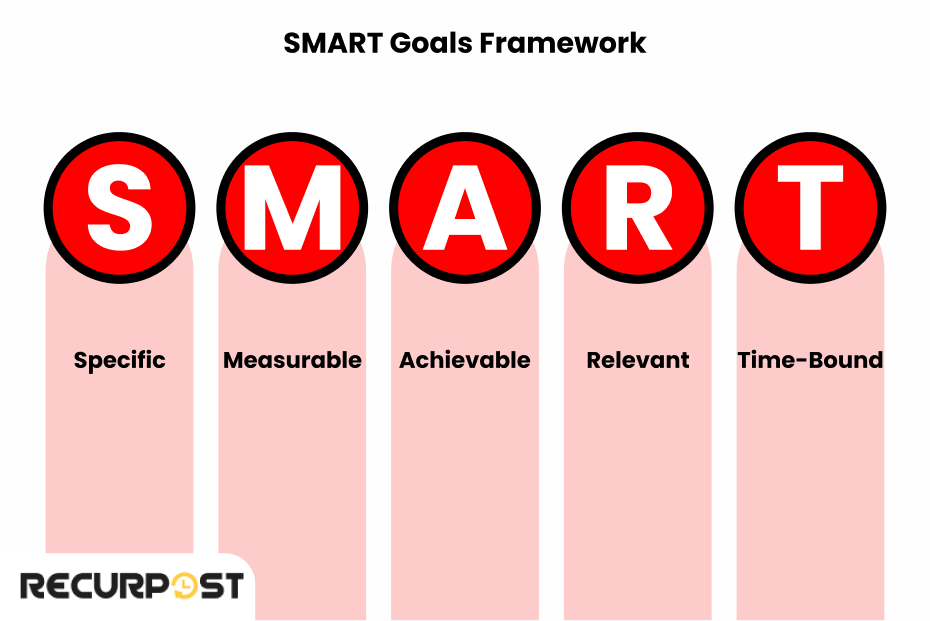
- Specific: Replace vague goals with measurable ones like “Grow Instagram engagement by 25% in Q1 with consistent social media posts.”
- Measurable: Track numbers. Aim for “Gain 10,000 views on YouTube video content by the end of the month.”
- Achievable: Set realistic goals based on your content creation process and current performance.
- Relevant: Make sure goals connect with business objectives, such as boosting leads or supporting the sales team.
- Time-Bound: Add timelines. A goal without a date is just a wish. Deadlines keep content creators accountable.
Audience Engagement Tactics
- Leverage User-Generated Content: UGC builds trust and shows your target audience that others enjoy your brand. Ask customers to share social media content, then feature them. This fosters community and boosts engagement.
- Use Storytelling: Share real stories, case studies, or behind-the-scenes insights. This makes your content marketing more relatable and human.
- Personalize Your Content: Use audience data to craft relevant content. Whether via email marketing, social media accounts, or ads, tailored messaging helps create valuable content that resonates.
SEO Best Practices
- Voice Search Optimization: Many users now rely on voice assistants. Structure website content with conversational queries to rank in search results.
- Local SEO: For local businesses, use location-based keywords and update your Google Business profile. Local SEO boosts website traffic and attracts potential clients.
- Backlinks: Backlinks remain an important factor for rankings. Collaborate with other content creators or guest post on industry leaders’ sites to grow domain authority.
Emerging Trends to Embrace
- Live Streaming: Live video content is growing quickly. It creates real-time engagement and builds stronger ties with your target audience. In March 2020, Google reported a 300–500% spike in searches for live-streaming platforms. (Cloudinary)
- AI-Generated Content: Use tools like ChatGPT to spark content ideas, write summaries, or draft social media posts. AI also helps content creators streamline the content creation process.
- Micro-Content: Short-form social media content dominates on TikTok, Instagram Reels, and YouTube Shorts. Aivideo states that videos under 90 seconds retain 50% of viewers, making this type of engaging content a proven way to boost organic traffic and reach a larger audience.
Measuring Success
Key Performance Indicators (KPIs)
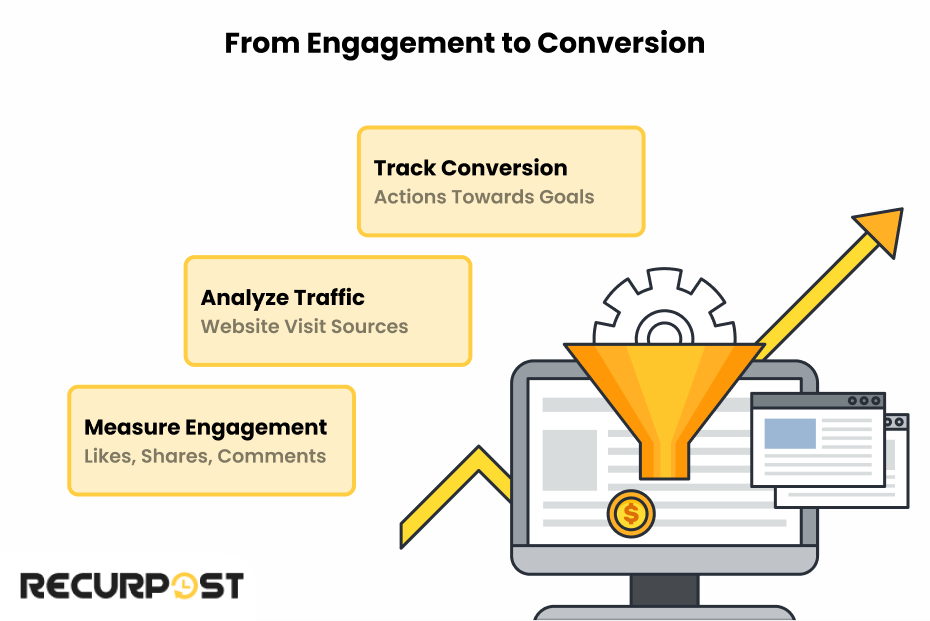
- Engagement: Metrics like likes, shares, comments, and time spent on social media content or website content reveal how your target audience interacts with your posts.
- Traffic: Watch organic, referral, and direct traffic for your site. More visitors mean your content promotion is reaching a larger audience. Tools like Google Analytics show which social media platforms and channels drive the most website traffic.
- Conversion: Engagement and traffic are great, but conversions matter more. Whether sign-ups or sales, measure how many potential customers act after seeing your content pieces. Conversions prove if your content creation process supports business goals.
Optimizing Through Analytics
After tracking KPIs, use Google Analytics, Hotjar, and HubSpot to refine your content strategy.
Run A/B tests on social media posts or blog posts to find top performers. Benchmark against industry leaders to uncover content gaps worth filling.
Tools to Simplify Content Creation in 2025
AI-Powered Writing & Research Tools
- Jasper.ai: Ideal for scaling Content Creation, Jasper generates blog posts, social media posts, and email sequences quickly. It maintains quality content while saving time.
- Copy.ai: Great for ad copy or campaigns, Copy.ai creates landing pages and social media content in minutes. It helps content marketers and content creators stay productive.
- Writesonic: Writesonic speeds up blog post creation and landing pages. With built-in SEO features, it supports website content optimization and improves search engine visibility.
- ChatGPT-4: ChatGPT-4 produces FAQs, content ideas, and conversational writing. It helps build engaging content for potential clients and supports the content creation process with a relatable tone.
Advanced CMS Options
- WordPress: Powers 40% of websites worldwide. It supports blogging, e-commerce, and a variety of content formats for content writers.
- Ghost: Fast, SEO-focused, and great for blogging content creation. It includes templates and tools for community building.
- Drupal: Perfect for managing website content creation in complex projects with multi-user permissions.
- Magento: A leading eCommerce CMS with SEO tools, strong security, and customizability for digital content in online stores.
Visual Content Creation Tools
- Lumen5: Lumen5 uses AI to repurpose blog posts or articles into video content. It generates scripts, adds stock footage, music, and captions so content creators can create multiple pieces quickly.
- Canva Pro: Canva Pro leads with its easy interface. From social media posts to presentations and infographics, it helps content marketers design engaging content with templates that fit various formats.
- Adobe Spark: Great for social media content, Adobe Spark creates branded graphics, short videos, and posters. It’s simple, customizable, and perfect for content promotion across different platforms.
- Figma: Figma supports collaborative digital content design. It’s popular with content writers, designers, and teams managing website content creation. Real-time feedback helps deliver high-quality content consistently.
Content Scheduling
- RecurPost: RecurPost is an evergreen social media content scheduler. This tool allows you to set up a content library and schedule posts for automatic reposting at optimal times.
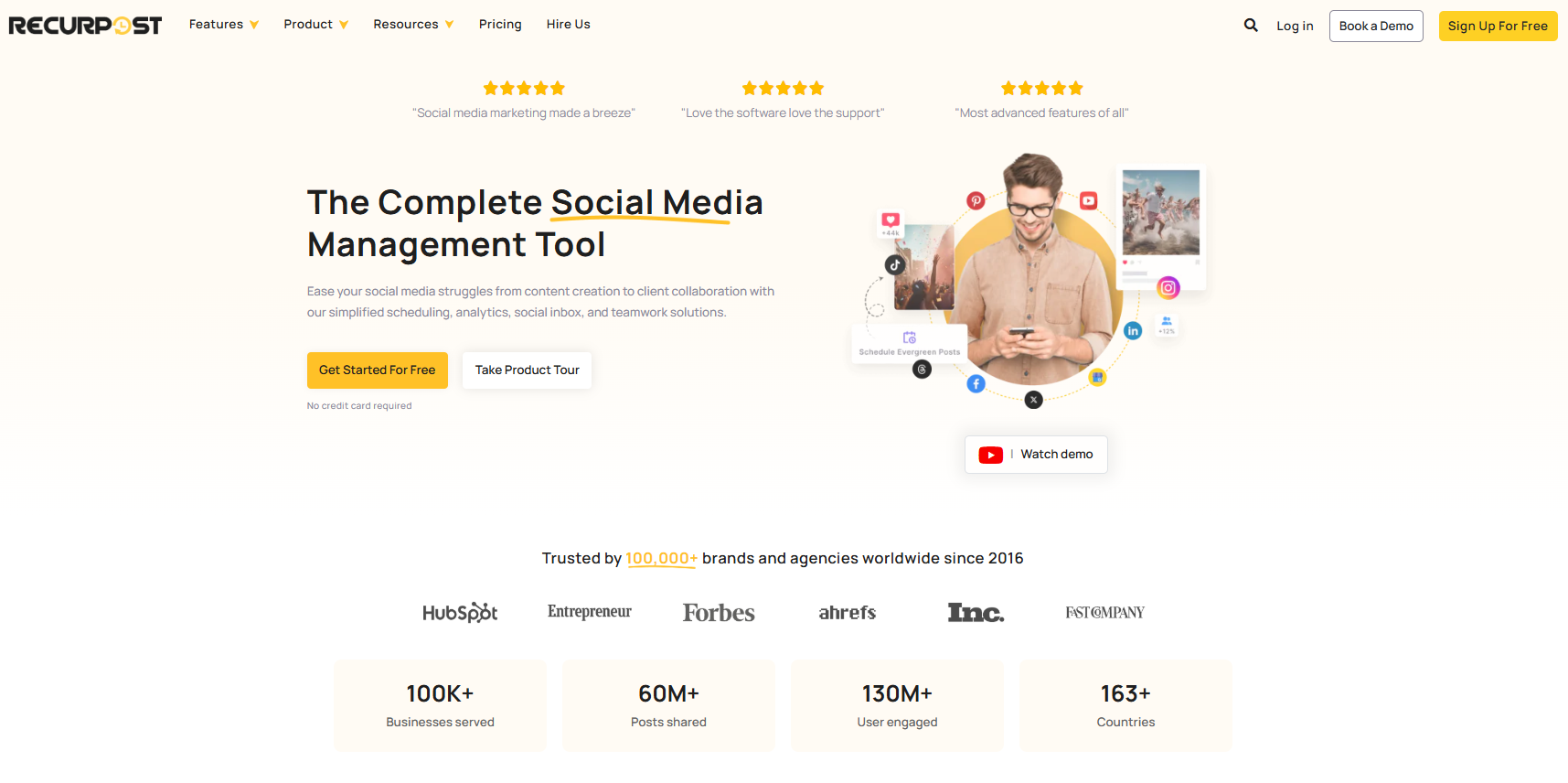
Content creation planner, RecurPost is especially useful for content that remains relevant over time, such as educational blog posts or promotional materials. It ensures that your posts continue to circulate even if you’re not actively posting every day.
- Buffer: Buffer allows you to schedule posts, track analytics, and engage with your audience. It is user-friendly interface makes it easy to plan out your content calendar and ensure consistency across channels.
- Later: Later is another great content scheduling platform, particularly for visual content creators on Instagram and Pinterest. The platform also provides some analytics tools to help you track your post-performance and optimize your strategy.
Advanced Tips for Becoming a Content Creator in 2025
Here are advanced tips to help you succeed in the creator economy in 2025.
How to Start from Scratch
To thrive as a beginner, build a strong portfolio. Whether you’re seeking freelance content creation jobs or just starting your journey, a simple website content portfolio and resume make a difference. For beginner-friendly content creation, showcasing your work is the best way to attract potential clients.
- Build a Portfolio: Create a portfolio website with tools like Wix or WordPress. Use it to share content pieces, demonstrate your unique style, and boost brand awareness. This helps build trust with existing customers and draw in new ones.
- Network with Creators: Connect with other content creators to expand reach and gain content creation tips. Join LinkedIn, Twitter, or Facebook groups to meet industry leaders and collaborators. Networking also helps with content promotion and can generate brand deals.
- Consistency is Key: Success requires posting on a consistent schedule. Keep your social media accounts active, engage regularly, and use a posting schedule to maintain visibility.
Educational Resources
Here are some helpful tools to grow your content creation skills:
- Content Creation Course: Coursera and Udemy offer lessons on content strategy, digital marketing, and video content production.
- Content Creation PDF: Free eBooks and guides provide a quick reference. Many content marketing blogs share resources for content creation.
- YouTube Tutorials: A great place to learn SEO, editing, or social media content creation.
- Blogs from Industry Leaders: Stay current by following Moz, Neil Patel, and the Content Marketing Institute.
Secrets of Content Creation That Set You Apart
1. Create a Content Persona
Go beyond an audience profile. A persona mirrors a specific audience, including habits, triggers, and pain points. Knowing these helps you create valuable content that provides solutions.
2. Leverage Micro-Moments
Craft short-form content like Instagram Reels, polls, or quick tips. A 15-second video content piece or poll can spark engagement and capture social media audiences fast.
3. Mix Evergreen and Trend-Based Content
Evergreen guides or tutorials build authority, while trends like memes or challenges boost social media content visibility. Pair a blog on content strategy with a viral TikTok on content creation in 2025 for balance.
4. Use Interactive Formats
Add polls, quizzes, or contests to improve audience engagement. Tools like Interact or Canva let you design content formats like interactive PDFs for different platforms.
5. Repurpose Content
Reimagine, don’t repost. Turn a blog post into Twitter threads, Instagram carousels, or short videos. Tools like Lumen5 help transform written content into engaging content across social media platforms.
6. Tap into UGC
User-generated social media posts like reviews and testimonials build trust. Featuring them strengthens community building and aids content promotion.
7. Be Vulnerable
Share challenges from your content creation journey. Authenticity helps build trust with potential customers.
8. Collaborate on Content
Work with content creators, brands, or industry leaders. Partnerships expand reach and create content pieces for a larger audience.
9. Optimize for Voice Search
Use conversational keywords and long-tail queries to make your website content appear in search results.
10. Embrace AI for Ideation
Tools like Jasper, ChatGPT, or Copy.ai inspire content ideas and headlines. They support content writers but require a human touch for authenticity.
11. Nail the First 10 Seconds
Whether a social media post or video content, hook users instantly with bold facts or questions.
12. Leverage Emotional Analytics
Platforms like Hootsuite sentiment analysis show reactions. Adjust tone to deliver relevant content that resonates.
13. Gamify Your Content
Add milestones, points, or challenges. Gamification boosts engagement and motivates users to share content pieces.
14. Try New Platforms Early
Adopt emerging social media platforms like BeReal or Threads. Early adoption gets more visitors before spaces get crowded.
15. Create Content for AI Summaries
Use bullets and concise answers to appear in AI-driven summaries like Google Snippets. This improves visibility for your content pieces.
16. Think Global, Act Local
Tailor posts for local dialects, culture, and trends. This hyper-relevance builds trust between content marketers and regional audiences.
17. Prioritize Data-Driven Storytelling
Combine stats with narrative. Infographics or case studies strengthen content marketing credibility.
18. Make CTAs Irresistible
Replace generic CTAs with phrases like “Unlock tips today.” Strong CTAs encourage potential clients to act.
19. Plan for a Series
Create a content series like “How to Master Content Creation in 2025.” Multi-part projects keep your audience returning.
20. Add Easter Eggs
Hide extras like free guides, shoutouts, or resources for content creation to surprise followers. Unexpected bonuses foster loyalty.
Conclusion
These content creation strategies help your content marketing stand out in 2025. Focus on creating engaging content for your target audience, which encourages interaction and builds trust.
Stay ahead by using tools like RecurPost, building a content creation plan, and launching campaigns that drive organic traffic and strengthen your content strategy.
FAQs on Content Creation
1. What skills are needed for content creation?
Content creators should have skills like writing, storytelling, SEO, video editing, graphic design, and an understanding of analytics to measure performance.
2. How do I ensure my content reaches the right audience?
Use audience research, create personas, and distribute content through the right channels, like social media, email marketing, and paid ads, while optimizing it for SEO.
3. What is the best way to repurpose content?
Repurpose content by turning a blog post into a video, infographic, or social media carousel. You can also compile multiple posts into an eBook or webinar.
4. What’s the difference between content marketing and content creation?
Content creation involves making content, while content marketing focuses on distributing it strategically to achieve specific business goals.
5. What’s the most common mistake in content creation?
A major mistake is creating content without understanding the audience’s needs or skipping optimization for search engines and engagement.
6. How long does it take to see results from content creation?
It can take 3–6 months to see significant results, especially in SEO-focused content, but consistent efforts can yield long-term benefits.

Shalini Nagar is an experienced content writer with a proven track record of creating diverse and engaging content across various formats. With years of expertise in crafting blogs, articles, she excels at delivering compelling narratives tailored to different audiences.

